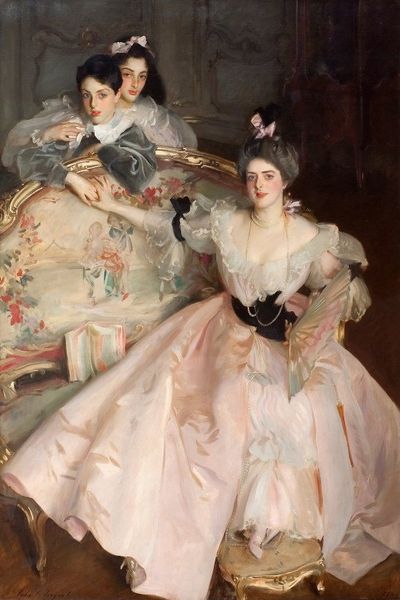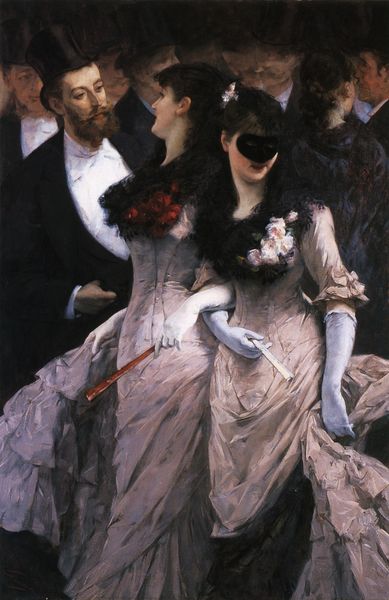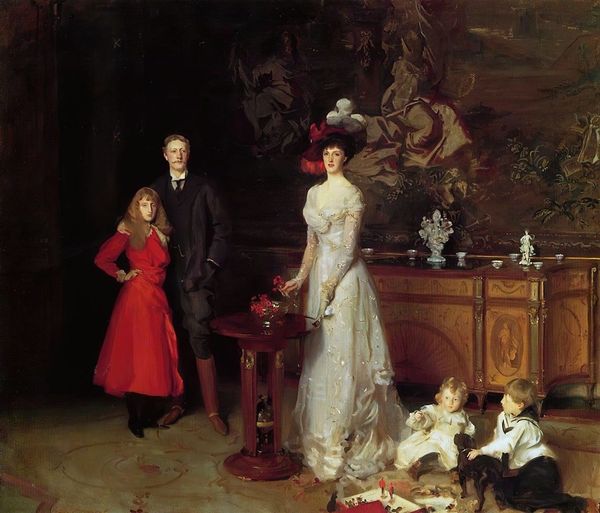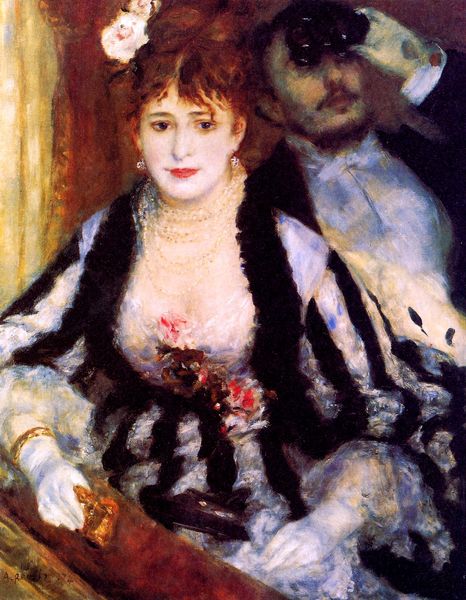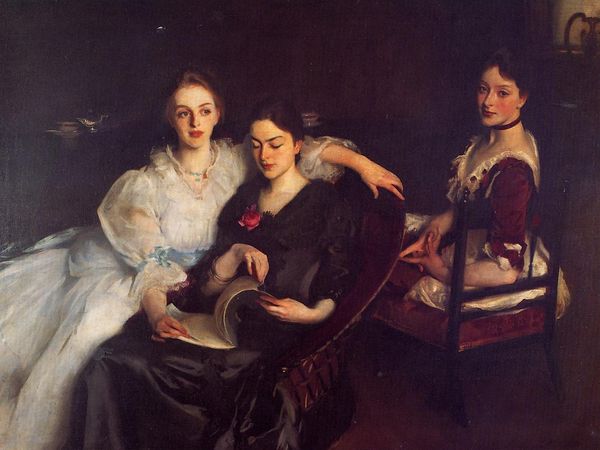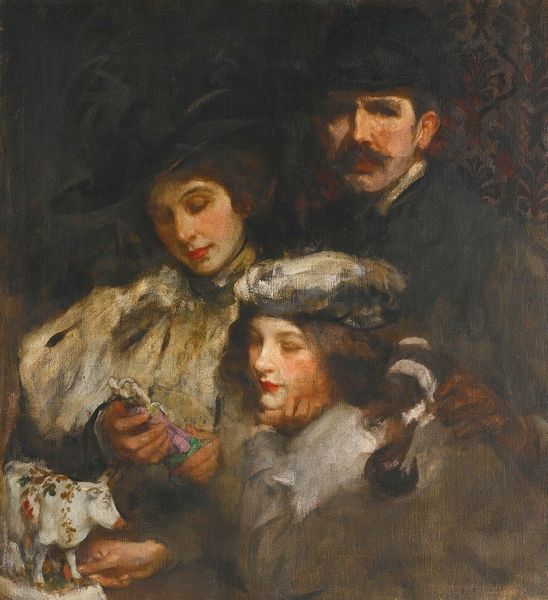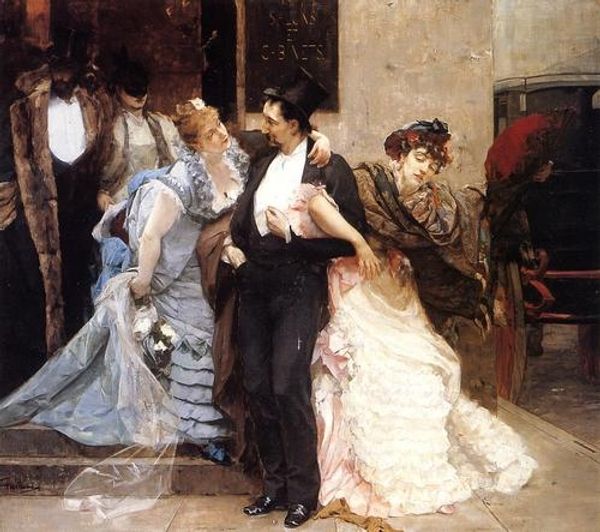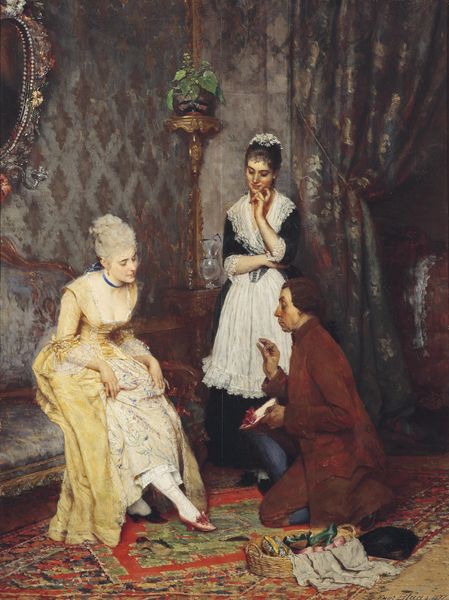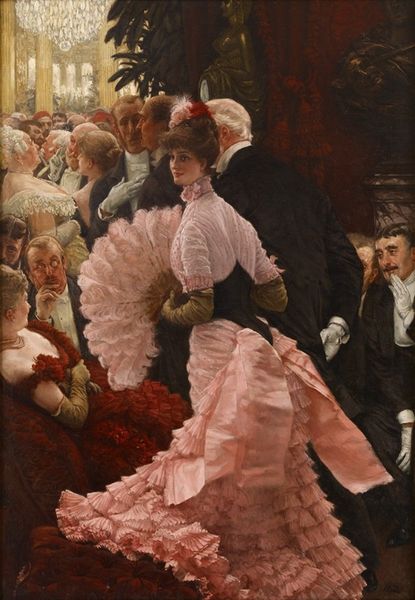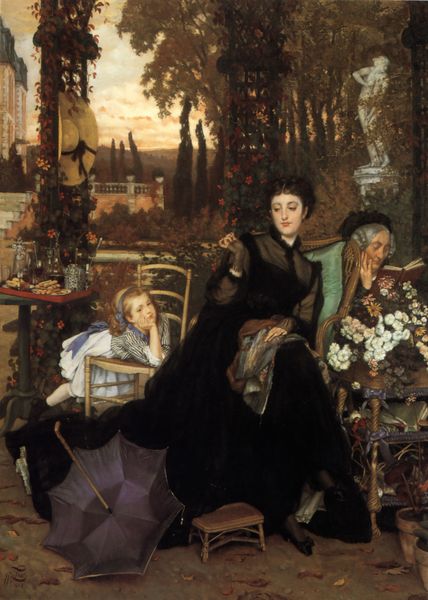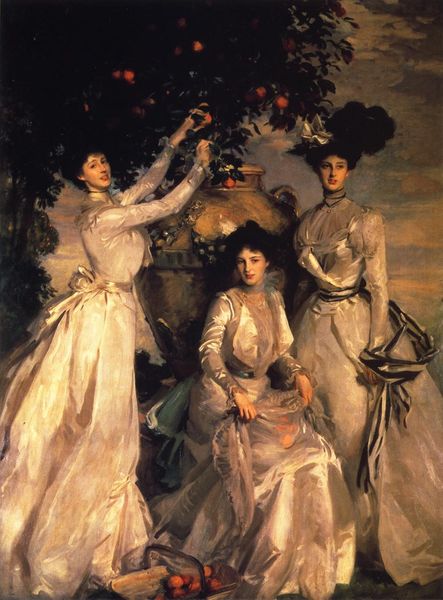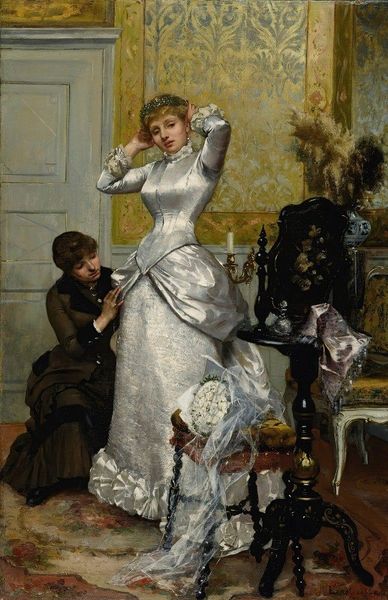
Dimensions: 188 x 133 cm
Copyright: Public domain
Editor: So, this is John Singer Sargent's "Hylda, Almina and Conway, Children of Asher Wertheimer," painted in 1905. It’s oil on canvas and lives here at the Tate Britain. It strikes me as incredibly formal, almost staged, yet the brushwork feels so loose and free. What do you see in this group portrait? Curator: Formally, I see a complex arrangement of shapes and tonal values. Sargent is clearly interested in the interplay between the solidity of the figures and the more atmospheric rendering of the background. Notice how the dark clothing of Conway and Almina creates a strong vertical axis, which is then offset by the more curvilinear forms in Hylda's dress and hat. The impasto technique is used judiciously to capture light and texture, wouldn't you say? Editor: Definitely. The light really dances across Hylda's ruffled sleeves and the little dog. I’m curious, though, about the rather somber palette. Is that common for Sargent's portraits? Curator: It's worth considering the distribution of colors. While the overall tone may appear subdued, observe how Sargent uses small pops of red—in Almina's hat and Hylda's scarf—to draw the eye and create a sense of visual rhythm. Also the darker tones emphasizes the details such as each person's individual expression. What about that, do you see what I mean? Editor: Yes, that subtle contrast definitely animates the composition. I hadn't really noticed that the colors are subtly hinting to different focal points that all build up to an impressive ensemble. Curator: Indeed. It's through the careful arrangement of these formal elements that Sargent constructs meaning, suggesting the relationships between the siblings. We can study these contrasts as being representative of more things, and other symbolisms beyond color, but this alone can carry us quite far. Editor: It’s fascinating to consider how much can be gleaned from simply observing the artist’s formal choices, and how they alone, create visual harmony and impact. Curator: Precisely. And it is precisely this type of viewing that leads to richer and newer ways to understand not just this art, but art overall.
Comments
No comments
Be the first to comment and join the conversation on the ultimate creative platform.
